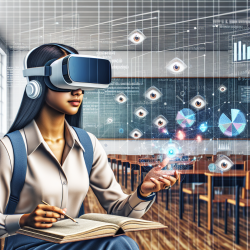Introduction
Virtual Reality (VR) is transforming various fields, including education, by providing immersive experiences that enhance learning outcomes. A recent study titled "Virtual Reality: An Immersive Tool for Social Work Students to Interact with Community Environments" highlights the potential of VR in social work education. This blog explores how practitioners can leverage VR to improve their skills and outcomes for students.
The Power of Immersive Learning
The study conducted by Lanzieri et al. (2021) at New York University demonstrates the effectiveness of VR in social work education. By immersing students in a 360-degree VR simulation of a typical New York City neighborhood, the research aimed to help students understand the community's history, resources, demographics, and physical space. The results showed statistically significant improvements in students' knowledge and perceptions, indicating the power of VR as a learning tool.
Benefits of VR in Social Work Education
VR offers several advantages over traditional learning methods:
- Safe Practice Environment: VR provides a safe space for students to practice and make mistakes without real-world consequences, enhancing their confidence and skills.
- Enhanced Reflective Skills: The immersive nature of VR encourages reflective thinking, allowing students to better connect theoretical concepts with practical applications.
- Immediate Feedback: VR simulations can provide instant feedback, helping students identify areas for improvement and reinforcing learning.
- Diverse Learning Opportunities: VR can simulate various environments and scenarios, exposing students to a wide range of social work contexts and challenges.
Implementing VR in Social Work Education
For practitioners looking to integrate VR into their teaching methods, the following steps can be taken:
- Identify Learning Objectives: Clearly define the skills and knowledge you want students to gain from the VR experience.
- Select Appropriate VR Tools: Choose VR platforms and equipment that align with your educational goals and budget.
- Design Engaging Simulations: Create realistic and interactive VR scenarios that challenge students and encourage critical thinking.
- Facilitate Reflective Discussions: After the VR experience, engage students in discussions to reflect on their learning and connect it to real-world practice.
- Assess Learning Outcomes: Use pre-and-post assessments to measure the impact of VR on student learning and make data-driven adjustments to your approach.
Encouraging Further Research
While the study provides promising insights, more research is needed to fully understand the potential of VR in social work education. Practitioners are encouraged to conduct further studies, exploring different VR applications, measuring long-term impacts, and identifying best practices for implementation.
To read the original research paper, please follow this link: Virtual Reality: An Immersive Tool for Social Work Students to Interact with Community Environments.










